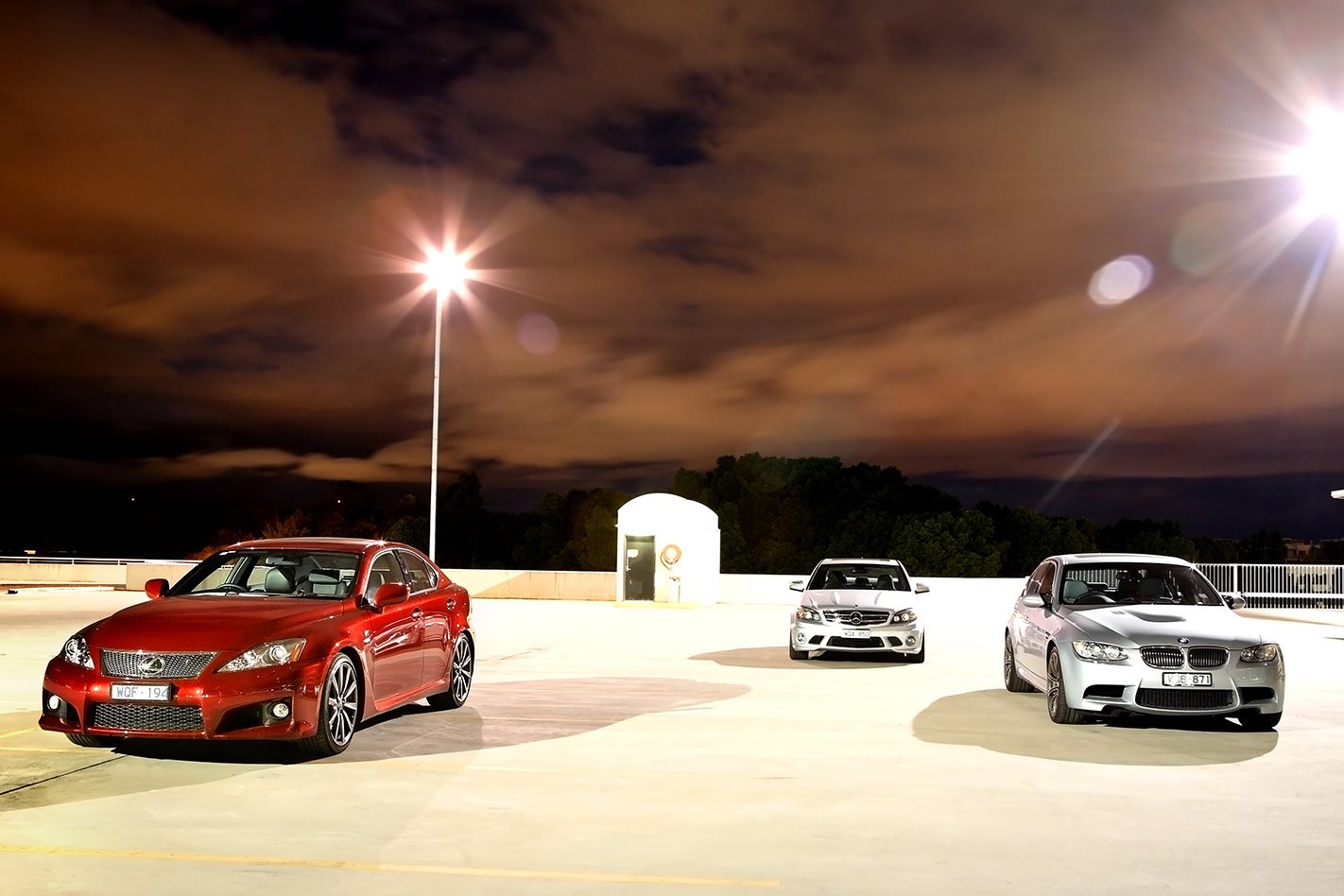If Kylie Minogue decided to record a thrash-metal album, the Queen would probably ask her to hand back her OBE, but at least there’d be a parallel for the Lexus IS F.
Two decades of building ultra-refined, four-wheeled sedatives with all the character of Sorbent toilet tissue and then ‘shazam!’, out pops a growling V8 Japanese muscle sedan hell-bent on ending Germany’s sporting dominance.
Of course, that’s harder than it sounds when your first proper performance car happens to be competing head-to-head with the new BMW M3 sedan and Mercedes-Benz’s thundering C63 AMG.
But so extensive are the changes to Lexus’s compact-luxury IS that the hardened-up ‘F’ stands one helluva chance of knocking the M3 and C63 from their elevated perches, or at least severely denting their pride. And its model designation suggests as much – the ‘F’ signifying Japan’s famous (Toyota-owned) Fuji speedway, though it may well allude to Gordon Ramsay’s famous “F@#k me” exclamation.

On paper, the IS F has seemingly nailed its target. She’s somewhat heavier than the competition, just like the standard IS250 is over a 325i or C280, but its 5.0-litre direct-injection V8 punches out an impressive 311kW at 6600rpm – two more than the M3, 1700rpm sooner.
The F’s engine is a development of the 4.6-litre from the GS and LS460s, but the cylinder block and heads, intake and exhaust systems, lubrication system, crankshaft, pistons, connecting rods, electronic throttle body and camshaft profiles are all unique.
First-for-Lexus technical highlights include a dual air-intake system, large-diameter titanium valves (for increased lift and greater engine speed), hollow camshafts, and dual variable valve timing with electric actuation on the inlet camshafts.
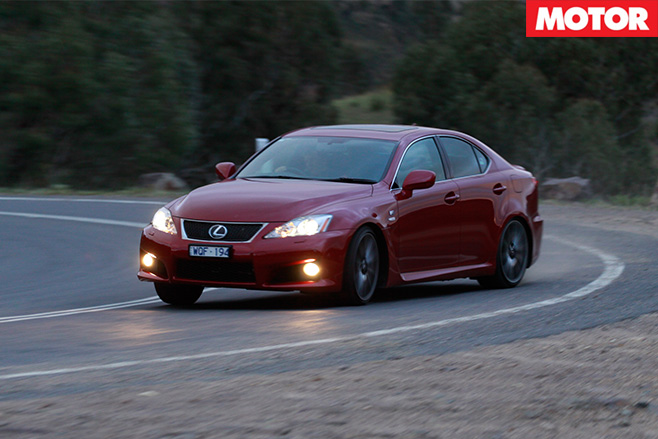
Considerable track time behind both German V8s confirms that they, too, are strong and meaty enough to handle lengthy track thrashings without bursting at the seams, but it’s the difference in character between the M3’s 4.0-litre, the IS F’s 5.0-litre and the C63’s 6.2-litre that is the focus of this exercise. And they call this work…
Newbie first. The IS F V8’s party trick is undoubtedly the snorty induction growl that sharply interjects when its second air-intake port opens above 3600rpm. What begins as a distant burble from its engine and its curiously arranged tailpipe quartet quickly turns nasty, erasing any pre-conceived doubts that Lexus can’t do noise.
It’s a deep cabin-filler that never fails to satisfy your inner revhead, though it does peter out a little as the IS F nears its somewhat premature 6900rpm ignition cut-out. Keep it grunting between three-six and five-and-a-half on the F’s luminescent tach’, however, and it’s a veritable meat market.
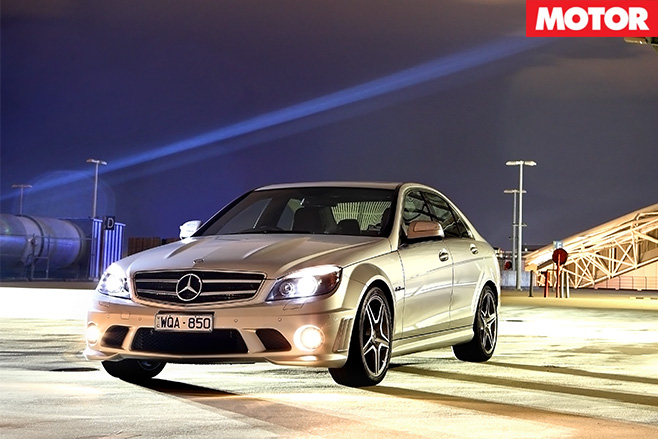
It has noticeably more top-end shove than the Lexus V8, and despite its greater dimensional capacity, it has another 500 revs up its sleeve, too – charging with serious aggression right to 7400rpm. But the loud-and-proud AMG V8 performs that trick at any speed, in any gear.
It’s the supreme spontaneity of the C63’s urge, and the brilliance of its transmission in assisting this hunger for the horizon, that makes this one of the greatest drivetrain combinations ever. You don’t have to flog it to fall head-over-heels in love with it, but when you do, even non-Catholics might feel the need to go to confession.
Alongside the brutal Benz, the M3’s demeanour is far more suave, like meeting a world-champion boxer who happened to be educated at Eaton. Its metallic V8 rumble is much more subdued until it starts to pile on revs, but beyond 5000rpm, it just keeps getting faster, frothier, and more intense.
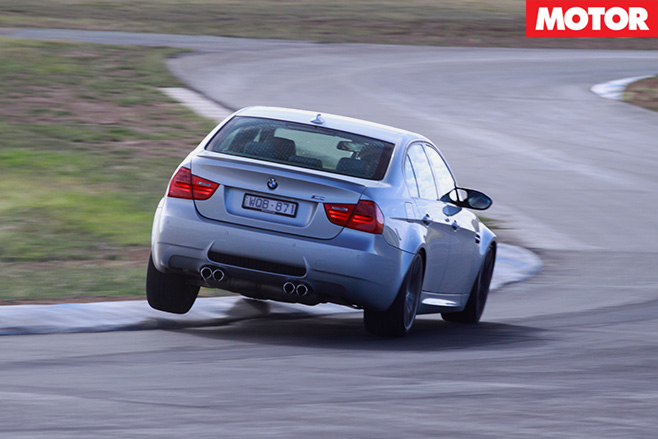
While the BMW’s two-pedal seven-speeder is a vast improvement over the old, unlamented SMG, it has one particularly annoying trait. In light-throttle situations in urban environs – like mounting a speed-hump or slowing for, then entering, a roundabout – the DCT tranny perpetually hesitates before choosing a gear.
With the adjustable shift program showing any less than three bars (of five in total – with five being the most hardcore, ESP on), it can be frustratingly lazy to respond. But at four bars (which is arguably the ideal shift setting), it still pauses before grabbing a low gear and surging.
It’s virtually impossible to drive around without having the DCT ’box in manual mode, but with seven ratios to pick from, that involves a lot of paddle-prodding. Thankfully, none of this is evident on the open road.
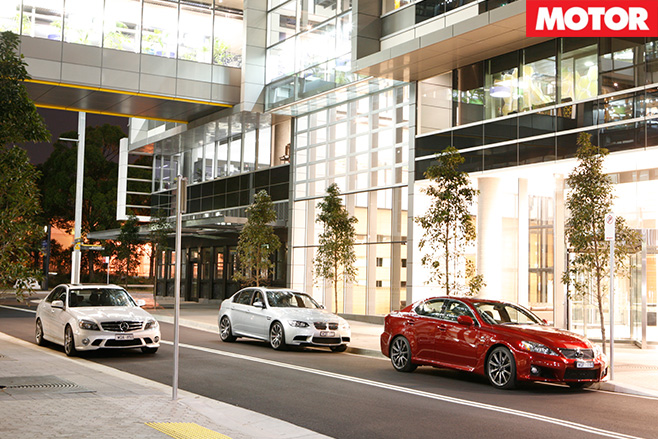
But the switch sits invisibly on the dash behind the steering wheel, and every time you start the IS F, it defaults to ‘Normal’, which means dopey gearshifts, dumbed-down throttle response and lighter steering. And yet another fumble for the ‘Sport’ button.
Even then, in Drive, with the dashboard’s green ‘Sport’ light glowing, upshifts feel and sound lazy, with big pauses between gear changes. And the ’box only throttle-blips on downshifts in Sport Manual. In contrast, the BMW’s M-DCT does it whenever, wherever. Ditto the C63’s ‘AMG Speedshift Plus’ 7G-Tronic.
Ah, yes, the C63’s transmission. Not every Benz seven-speeder we’ve tried over the years has felt completely on-song, but the example in this C63 (the same car we hammered over several thousand kays in the PC08 final last November) was basically flawless – perfectly attuned to the 6.2 V8’s brawn, always in the right gear, always shifting smartly and throttle-blipping perfectly.

Not only did the big-dicked C63 finally prove that it can put its muscle where its mouth is, in Drive with ESP fully off, but the M3 M-DCT’s launch control also worked properly in its preferred environment – scrabbling off the line with minimal wheelspin and slamming home the double-clutch box’s gearshifts.
Despite a deliberately shortened first gear, the IS F can’t quite match its Kraut rivals out of the blocks, but it maintained its margin to the BMW right to 180km/h, and its rolling-start performance is up to speed, as you’d hope with eight friggin’ gears!
Why the IS F needs so many ratios is anyone’s guess, particularly when most cornering up to 150km/h requires only second or third gear, but if it was for fuel-economy purposes, then objective achieved.

The other area where the Lexus puts clear distance between itself and the Germans is its turning circle – an amazingly tidy 10.2m, or a metre-and-a-half less than its rivals. It might require nearly three turns from lock-to-lock, but thanks to this brilliant manoeuvrability, it never feels in the least bit low-geared. Indeed, with the ‘Sport’ button engaged (which it should always be anyway), the IS F’s steering is impressively communicative and concise, and blends well with its chassis’ light, agile, balanced feel.
The IS F turns in sharply and does a highly convincing job of masking its 1.7-tonne kerb weight – relishing being thrown from one corner to the next and four-wheel-drifting cheekily as both its front and rear ends relinquish grip.
Right on its cornering limit, things become slightly untidy – it understeers, then as its front tyres bite, the rear goes into oversteer – but up until this point, Japan’s super-sedan is enjoyable and pointable. Interestingly, the IS F manages to combine dynamic elements from both its rivals. But ultimately, the German pair convincingly out-drive it. Why? Because both the C63 and M3 perform several disciplines substantially better than the IS F.
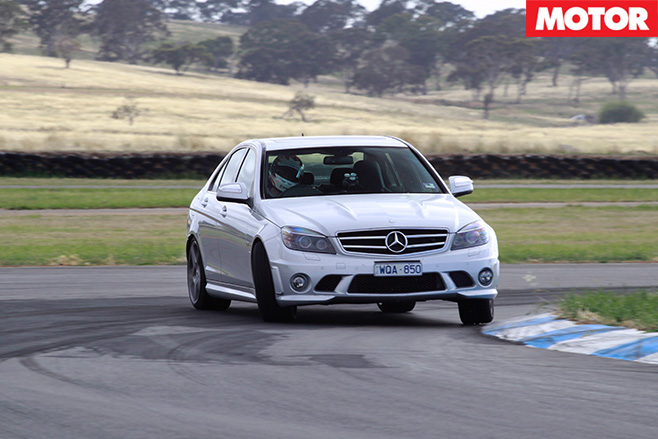
The Benz’s gorgeously chunky steering wheel is infinitely preferable to the IS F’s waif-like rim, droopy spokes and arced height adjustment, however, and while the C63 is similarly well-balanced, its P Zeros hang on longer, its handling generally feels more fluid in its transitions, and, most obviously, it has much more grunt to adjust its rear end with.
And there’s its ride – firm, but much better damped and far less pitchy than the unsettled IS F. Over one severe undulation on our test route, the C63 devoured it virtually unflustered. The M3 (in its damper’s mid-setting) was a touch abrupt, but clearly the best at reigning in body movement, while the IS F seemed to springboard off the road, sending its driver’s head towards the headlining, with arse-cheeks simultaneously leaving the seat, as it soared highest with too much vertical movement.
But it’s grip, or the relative lack of it, that lets the IS F down most. While its four-wheel-drifting shenanigans do make hard cornering entertaining, jumping into the M3 straight after puts things into perspective.
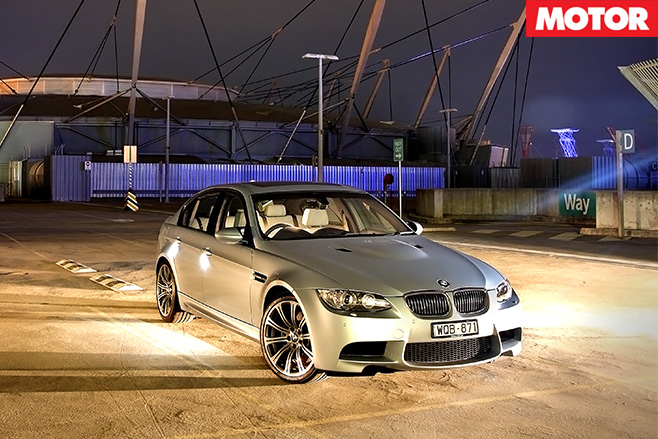
The M3 walloped the IS F everywhere, but was travelling 10km/h faster going onto the back straight and managed to slaughter the IS F’s lap time by three seconds, despite their relative parity in a straight line.
The M3’s larger footprint (on optional 19s) could explain some of its cornering superiority, but it’s a car that always seems to keep up with its driver – feeling more alive and even more accomplished the harder you drive it, particularly its steering. On the road, the M3’s cornering limits are so high that few will manage to unsettle it, yet there’s little trade-off for this handling excellence.
Even in the EDC damper’s middle ‘Normal’ setting, the M3 rounds off bumps and avoids jiggling around too much, with an even more GT-like ‘Comfort’ setting still up its sleeve. And its brakes – same-size 360mm vented and drilled fronts as the Lexus and Merc, but with the largest (350mm) rear rotors here – are strong enough to back up its pace, on either road or track.
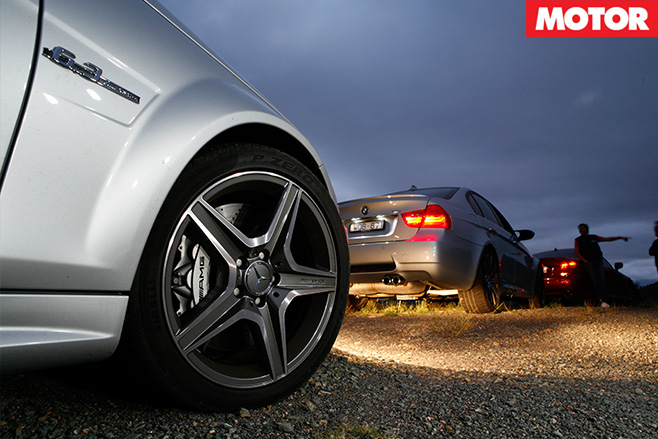
Certainly, the brakes on this lot look sizeable enough hiding behind suitably tough-looking rims – forged-alloy 19s in the case of the IS F. With all three modelling heavily flared guards and four impressionable exhaust pipes, it’s difficult to confuse any of them with lesser-engined models.
But it’s the BMW that has arguably the greatest presence, front, back, or side-on. Blending the coupe’s sexy front-end with a taller, chunkier middle and the sedan’s freshly facelifted rear (with classy new LED lights) makes the new four-door the toughest-looking M3 yet – even in metallic steel blue, and especially on the test car’s guard-filling 19s.
The handsomely pumped and nicely cut C63 is spoiled only its relatively bland tail (though its fat pipes try and make up for it), while the IS F looks muscular as hell from side on and any angles that capture its deeply vented front guards, but has fussy taillights, and a little bit too much chin.
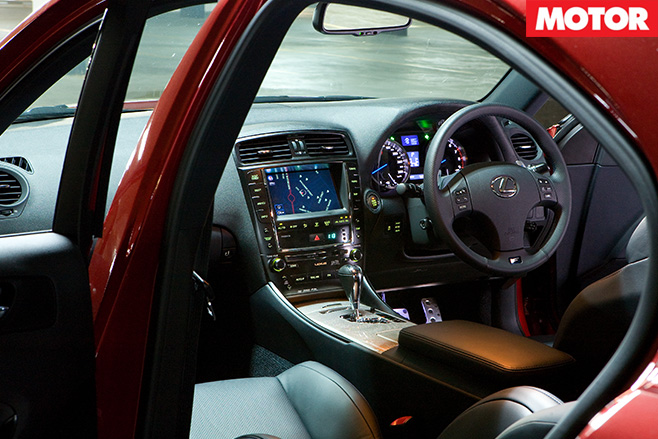
Its tacky, stylised ‘F’ badge is only really visible on the bottom steering-wheel spoke, but it’s embroided on the sides of all the seat cushions, too, and there’s one ergonomic failing that is impossible to miss. The front seat’s electric controls are already fairly close to the folding door pockets, but the drink-holder bulge sits right on the switches, making minor seat adjustments next to a bottle of water like squeezing your hand into a post box.

But it’s the revised M3, with its two-tone palette, stitched-leather trim, great seats and vastly improved new-generation iDrive that, unexpectedly, gets the vote for best interior. Impressive back section, too, with the best seat support and the most room. Unlike the IS F, with its idiotic two-person bench, split by an immovable mound of cheap, hard plastic, the M3 can actually cop three in its back seat.
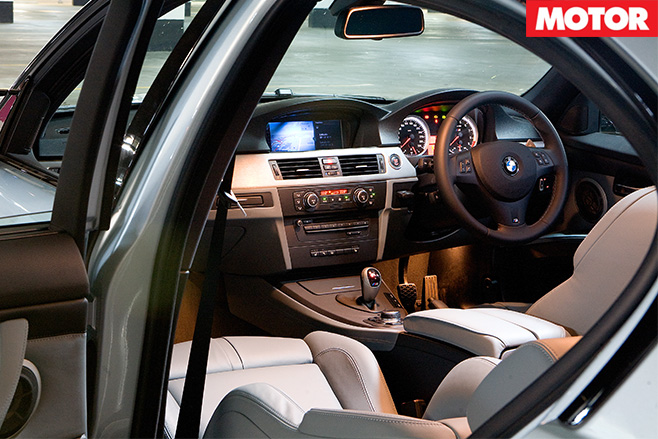
It isn’t as comfortable or as practical, and doesn’t ride anywhere near as well as its rivals. Ultimately, its repertoire is fairly narrow and it has enough small, yet irritating faults to occasionally distract you from what it does best – drive hard.
With finesse and experience on their side, the C63 and M3 are clearly more car than the IS F, though for more money. The BMW is quite possibly the ultimate race-car-for-the-road, with tremendous depth to its dynamics and so many facets to its personality.
Its balance, grip, adjustability and chuckability are all first rate, and in updated, enhanced sedan form, its overall appeal is greater than ever. But it’s a car that takes time, and committed hard driving, to truly appreciate. And the M-DCT double-clutch ’box isn’t without its flaws, though BMW still offers a preferable, and cheaper, six-speed manual.

But the M3 sedan is ultimately the better car, simply because of its superior handling ability, its mean looks and its greater practicality. We’d stick with the $7300-cheaper manual version, though, just like we’d go for a C63 AMG Estate, not the sedan.
Despite its near-miss, what the IS F does is serve as a clear warning to the Germans that they’ve had this market to themselves for way too long. So be warned. The Japanese are on a mission and next time around, with a little more practice, the outcome could get ugly. In the meantime, it’s pretty much a German dead-heat, depending on the day, the weather, or your mood. But both of them are stunners.
| SPECS | |||
| u00a0 | MERCEDES-BENZ C63 AMG | LEXUS IS F | BMW M3 |
| Body | 4-door, 5-seat sedan | 4-door, 4-seat sedan | 5-door, 5-seat sedan |
| Drive | rear wheels | rear wheels | rear wheels |
| Engine | 90-degree V8, DOHC, 32v | 90-degree V8, DOHC, 32v | 90-degree V8, DOHC, 32v |
| Material | alloy head/alloy block | alloy head/alloy block | alloy head/alloy block |
| Bore/Stroke | 102.2 x 94.6mm | 94.0 x 89.5mm | 92.0 x 75.2mm |
| Capacity | 6208cc | 4969cc | 3999cc |
| Compression | 11.3:1 | 11.8:1 | 12.0:1 |
| Power | 336kW @ 6800rpm | 311kW @ 6600rpm | 309kW @ 8300rpm |
| Torque | 600Nm @ 5000rpm | 505Nm @ 5200rpm | 400Nm @ 3900rpm |
| Redline/Cut | 7200/7400rpm | 6800/7000rpm | 8250/8400rpm |
| Fuel/Tank | 98 octane/74 litres | 95 octane/64 litres | 98 octane/63 litres |
| Test consumption | 17.2L/100km | 15.0L/100km | 16.9L/100km |
| Kerb weight | 1655kg | 1700kg | 1625kg |
| Power-to-weight | 203kW/tonne | 183kW/tonne | 190kW/tonne |
| Transmission | 7-speed automatic | 8-speed automatic | 7-speed double-clutch |
| Ratios | 4.38/2.86/1.92/ 1.37/1.00/0.82/0.73 | 4.60/2.72/1.86/1.46/ 1.23/1.00/0.82/0.69 | 4.78/2.93/2.15/1.68/ 1.39/1.20/1.00 |
| Final drive | 2.85 | u00a02.94 | 3.15 |
| Suspension | multi-links, coil springs, anti-roll bar (f); multi-links, coil springs, anti-roll bar (r) | upper A-arms, lower L-arms, coil springs, anti-roll bar(f), multi-links, coil springs, anti-roll bar (r) | struts, A-arms, adaptive dampers, anti-roll bar (f), multi-links, coil springs, adaptive dampers, anti-roll bar (r) |
| L/W/H | 4736/1795/1439mm | 4660/1815/1415mm | 4580/1817/1447mm |
| Wheelbase | 2765mm | 2730mm | 2761mm |
| Tracks (f/r) | 1569/1525mm | 1560/1515mm | 1540/1539mm |
| Steering | power rack and pinion | electric rack and pinion | power rack and pinion |
| Turning circle | 11.8m | 10.2m | 11.7m |
| Lock-to-lock | 2.5 turns | 2.9 turns | 2.4 turns |
| Brakes | 360mm ventilated/drilled discs, six-piston calipers (f), 330mm ventilated/drilled discs, four-piston calipers (r); ABS, BA, ESP | 360mm ventilated/drilled discs, six-piston calipers (f), 345mm ventilated/drilled discs, twin-piston calipers (r); ABS, CBC, VSC | 360mm ventilated/drilled discs, single-piston calipers (f), 350mm ventilated/drilled discs, single-piston calipers (r); ABS, DSC |
| Wheels | 18 x 8.0-inch (f), 18 x 9.0 inch(r), alloy | 19 x 8.0-inch (f), 18 x 9.0 inch(r), forged alloy | 19 x 8.5-inch (f), 19 x 9.5 inch(r), alloy |
| Tyres | Pirelli P Zero | Bridgestone Potenza RE050A | Michelin Pilot Sport |
| Tyre size | 235/ 40ZR18 93Y (f), 255/35ZR18 94Y (r) | 225/ 40ZR18 93Y (f), 255/35ZR19 96Y (r) | 245/ 35ZR19 93Y (f), 265/35ZR19 98Y (r) |
| Price | $144,365 | $129,000 | $152,300 |
| Price as tested | $150,191 | $129,000 | $165,790 |
| Rating | 9/10 | 7.5/10 | 9/10 |
| Like | Brilliant drivetrain, wonderful character, one of AMGu2019s best | A fine first effort that comes close to the Germans… | Even better than the coupe, with unmatched dynamic depth |
| Dislike | Brakes struggle a bit on track, M3 ultimately out-handles it | ..but stumbles with several irritating detail faults | Lacks C63u2019s instant appeal – hard driving exposes its talent |
| FAST FIGURES | |||
| u00a0 | C63 AMG | LEXUS ISF | BMW M3 |
| 0-10km/h | 0.43sec | 0.56sec | 0.35sec |
| 0-20km/h | 0.84sec | 0.97sec | 0.69sec |
| 0-30km/h | 1.26sec | 1.45sec | 1.06sec |
| 0-40km/h | 1.65sec | 1.90sec | 1.45sec |
| 0-50km/h | 2.04sec | 2.32sec | 4.95sec |
| 0-60km/h | 2.47sec | 2.78sec | 2.45sec |
| 0-70km/h | 2.99sec | 3.35sec | 3.00sec |
| 0-80km/h | 3.49sec | 3.92sec | 3.40sec |
| 0-90km/h | 4.06sec | 4.53sec | 4.09sec |
| 0-100KM/H | 4.74sec | 5.18sec | 4.75sec |
| 0-110km/h | 5.44sec | 6.01sec | 5.39sec |
| 0-120km/h | 6.19sec | 6.83sec | 6.28sec |
| 0-130km/h | 7.00sec | 7.66sec | 7.16sec |
| 0-140km/h | 7.89sec | 8.57sec | 8.12sec |
| 0-150km/h | 8.90sec | 9.64sec | 9.11sec |
| 0-160km/h | 9.97sec | 10.78sec | 10.27sec |
| 0-170km/h | 11.13sec | 11.97sec | 11.50sec |
| 0-180km/h | 12.32sec | 13.24sec | 12.80sec |
| 0-190km/h | 13.53sec | 14.68sec | 14.20sec |
| 400M | 12.81 @ 184.1km/h | 400m 13.26 @180.3km/h | 400m 12.85 @ 180.4km/h |
| 80-120km/h(Drive) | 2.9 | 3.2 | 3.1 |
| 80-120km/h 3rd | 3.1 | 3.5 | 3.7 |
| 80-120km/h 4th | 4.6 | 4.8 | 4.9 |
| 80-120km/h 5th | 7.2 | 6.0 | 5.8 |
| 80-120km/h 6th | – | – | 7.2 |
| 80-120km/h 7th | – | – | 9.3 |

